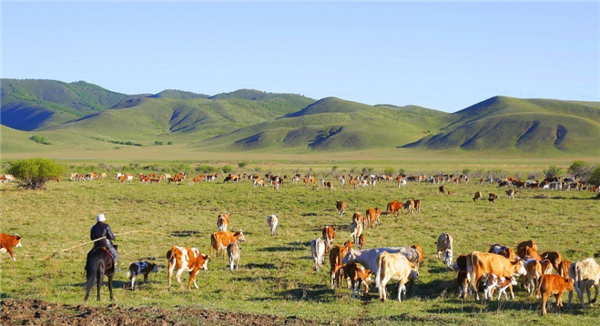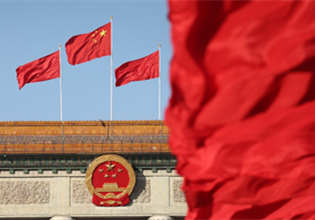Grassland aids nation's green development drive

A herdsman of Jarud Banner of Tongliao city is seen on the way to the summer campsite with herds of cattle in North China's Inner Mongolia autonomous region, June 1, 2020.
Grassland degradation is a biotic disturbance in which grass struggles to grow or can no longer exist due to factors such as overgrazing, the burrowing of small mammals and climate change, said Gao Wenyuan, a researcher at the Inner Mongolia Grassland Work Station.
"Initially, only patches of grass appear to die and turn brown," he said. "If the condition is not controlled from the beginning, the degradation will soon spread to more land. In some severe cases, the land will be laid bare."
He said a typical case was in neighboring Horqin, long famed for its beautiful grassland landscape but now the country's largest expanse of sandy land, which grew rapidly from 423,104 sq km in 1959 to 611,104 sq km in 1987. Thanks to recent rectification efforts, it now covers 408,000 sq km.
Grazing zone limited
To prevent grassland desertification, China's central government has prohibited grazing in some areas and placed limits on the practice in others.
Action taken by the Inner Mongolia Forestry Department in the early 1980s included limiting areas where grazing was allowed and encouraging the feeding of livestock with fodder.
Ting responded quickly, fencing off about 20 hectares of his grassland in 1986. The next year, the forage on this rested land had almost tripled, and many herding families decided to follow his lead.
But Ting soon realized that this was not a permanent solution.
"Feeding livestock with fodder is very demanding in terms of cost and the labor required," he said. "More importantly, meat from livestock raised on grassland has a reputation for tasting good and being nutritious due to the traditional way of grazing. We needed to figure out new ways that maintained the meat's high quality."
Through practice, Ting noticed that to reduce the pressure on the grassland, villagers first needed to reduce the number of livestock and then raise more beef cattle, whose grazing causes less damage than sheep because they do not crop the grass as closely.
"The profit from selling a steer was also almost five times higher than for a sheep," he said.
He sold all 400 of his sheep and switched to beef cattle. He also successfully developed tourism and the dairy and beef-processing industries to boost the local economy, which, in turn, encouraged more people to follow in his footsteps.
Nearly 80 percent of the herdsmen in Saruultuya Gastaa now raise beef cattle. When Ting retired as the village's Party secretary in 2015, its annual per capita income had risen to 18,000 yuan ($2,560)-up from barely 40 yuan two decades before.
In 2016, almost half the land in Xiliin Gol League was covered by vegetation, more than double the amount just 15 years earlier.



 Print
Print Mail
Mail





